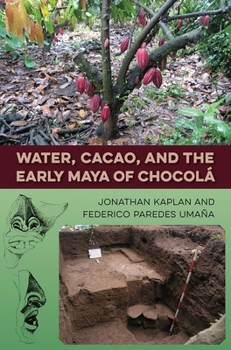Water, Cacao, and the Early Maya of Chocolá
(Part of the Maya Studies Series)
Water, Cacao, and the Early Maya of Chocol explores the often-overlooked Southern Maya Region of Guatemala, closely examining the near-legendary ancient city of Chocol . Jonathan Kaplan and Federico Paredes Uma a marshal extensive fieldwork to demonstrate why Chocol must now be added to the ranks of major Maya polities and theorize how it likely was innovative and influential early in the development of Maya civilization. In their research at the site, Kaplan and Paredes Uma a discovered a large and extraordinarily sophisticated underground water-control system. They also found evidence to support their theory that surplus cacao cultivation for trade underlay the city's burgeoning complexity. They contend that the city's wealth and power were built on its abundant supply of water and its arboriculture of cacao, a food which was significant not just in cuisine and trade but also was central in Classic Maya ideology and cosmology. In addition, Kaplan and Paredes Uma a provide the first description and chronology of the ancient city's ceramics and add over thirty stone sculptures to the site's inventory. Because the Southern Maya Region was likely the place of origin of Maya hieroglyphic writing as well as the extraordinary Maya Long Count calendar, scholars have long suspected the area to be critically important in ancient Maya history and process. Beyond confirming Chocol to be one of the major early Maya polities, this pioneering work also helps explain how and why the region in which it developed may have played an essential role in the rise of the Maya civilization A volume in the series Maya Studies, edited by Diane Z. Chase and Arlen F. Chase
Format:Hardcover
Language:English
ISBN:0813056748
ISBN13:9780813056746
Release Date:June 2018
Publisher:University Press of Florida
Length:524 Pages
Weight:2.16 lbs.
Dimensions:1.3" x 6.1" x 9.2"
Customer Reviews
0 rating





